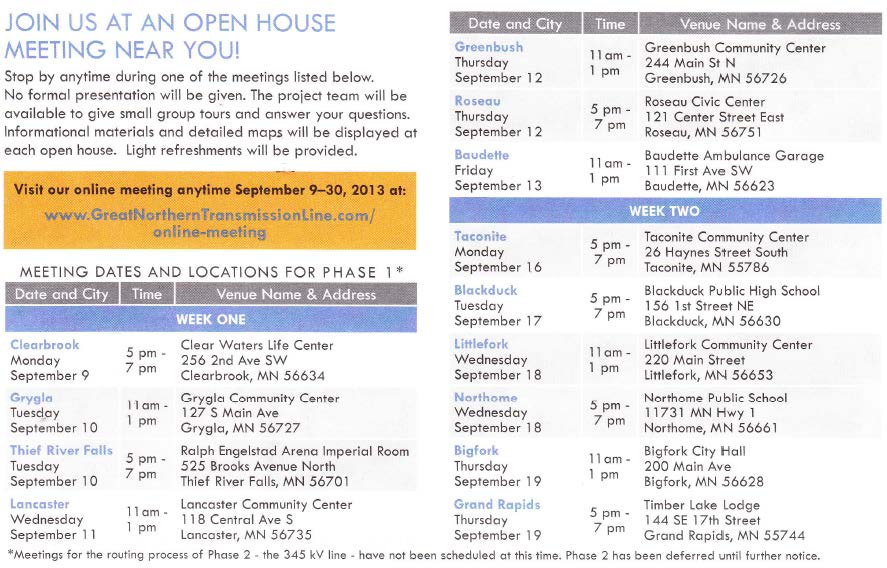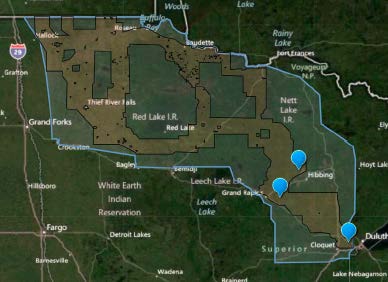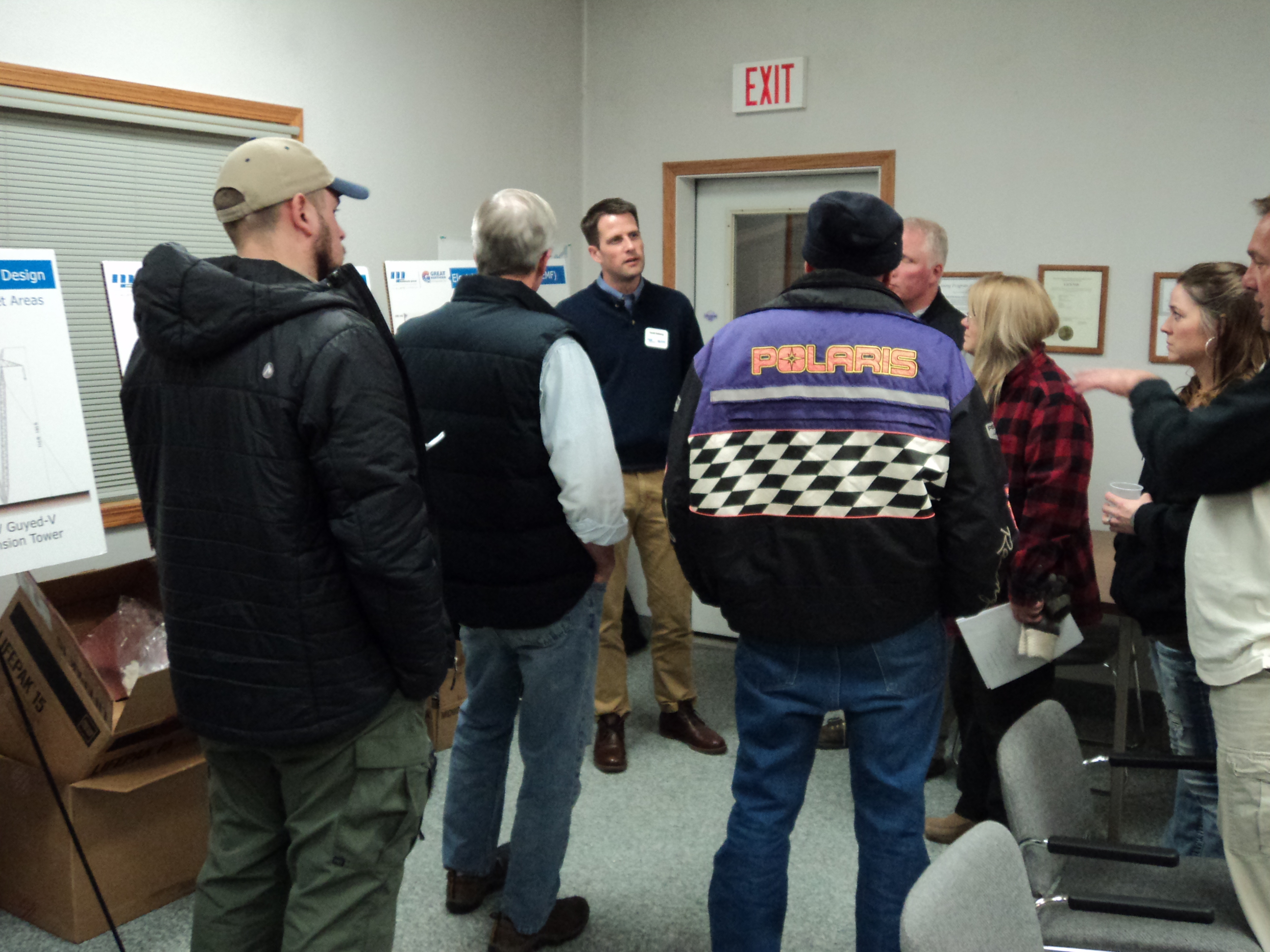
AAAAARGH… during last night’s meeting there was a question and concern expressed about electro-magnetic fields (I’ve focused primarily on magnetic fields, here and elsewhere). The question was referred to Minnesota Power’s engineer, and was essentially dissed, then and also later by the engineer.
What Minnesota Power says about EMF in their CoN Application (201310-92766-02) (p. 45-46):
Maximum ampacity is defined for the Project as the expected capacity of the line, in this case 2,000 Amps. The projected peak loading of the line – 1,024 Amps – was derived from power system modeling of the Project under system normal conditions in a 2020 summer off-peak case with high Manitoba – United States transfers. Per IEEE Standard 644-1994 (R2008), IEEE Standard Procedures for Measurement of Power Frequency Electric and Magnetic Fields From AC Power Lines, values were calculated at minimum conductor-to-ground clearance (mid-span) at a height of one meter above ground.


Maximum amps 52.94-88.54 at the edge of the Right of Way… Projected loading at the edge of the Right of Way, 26.81 – 44.76 mG. That’s HIGH!
Here’s their chart for the meetings:
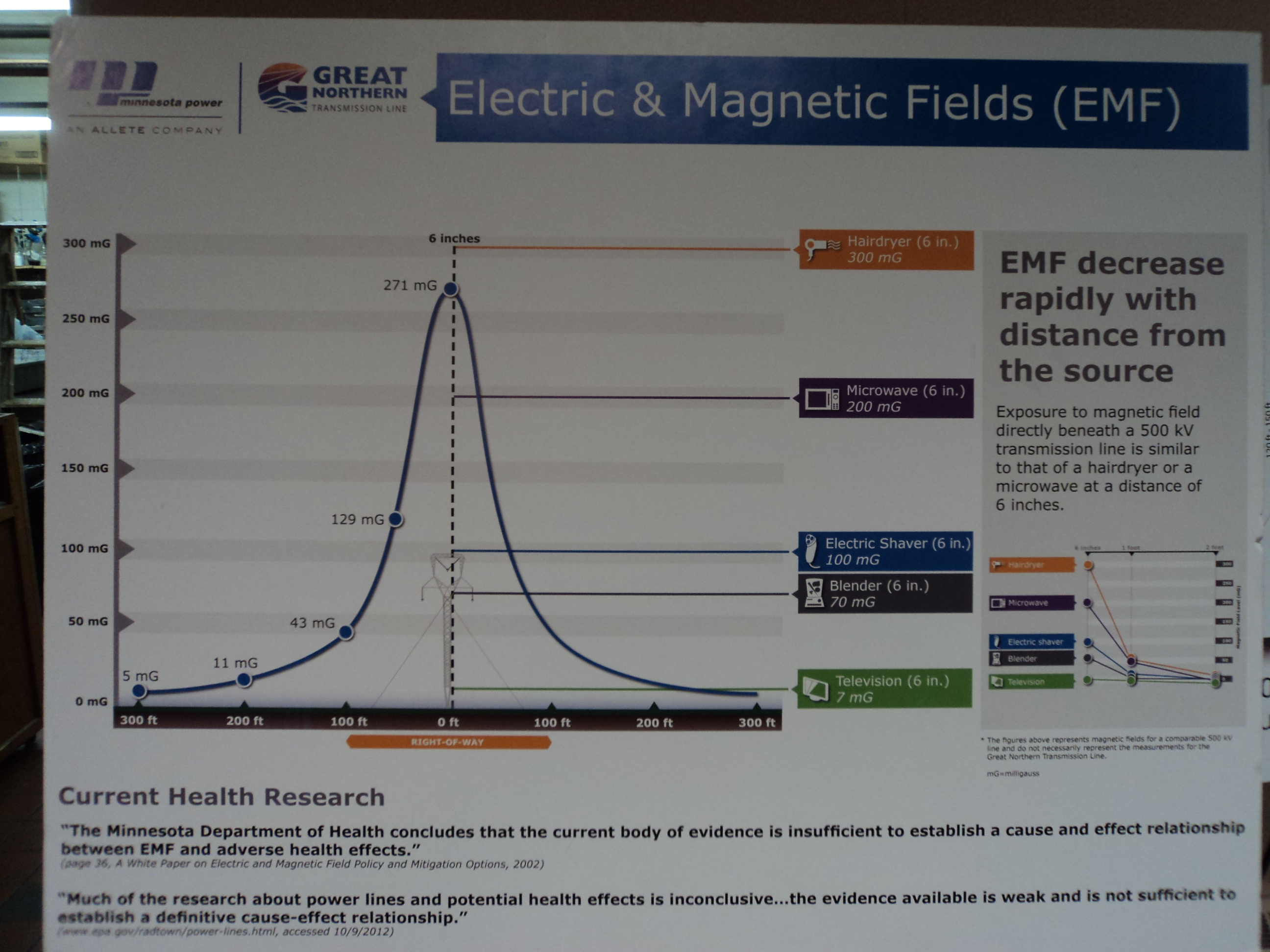
Now, here is a chart showing ampacity and MVA for various voltages and configurations, taken from this chart from the SW MN 345 kV Certificate of Need proceeding (Ex 35 App 7 Conductor spec-ACSR):
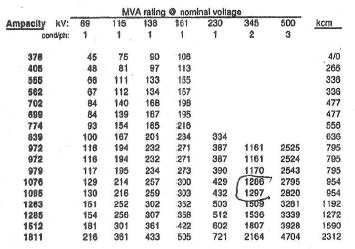
They’re talking about ampacity of 2,000, which is higher than the chart goes. And this is to be a 500 kV line with three conductors per phase, so the MVA rating at nominal voltage would be above 4,704 MVA. And remember, MW are essentially MVA (ask an engineer to explain the difference). Minnesota Power is saying that this project proposal is based on a 250 MW Power Purchase Agreement, and the potential of another 133 MW PPA. 250 + 133 = 383 MW. Out of MVA rating at nominal voltage of 4,704. Now I’m a math idiot, so let me get out the calculator: 4,704 – 383 = 4,321 MVA missing-in-action. What do you think will comprise the excess capacity for this project? Seems to me to be substantive size, type and timing issues here!
This is all about having a high capacity line to be able to market power south and eastward, let’s be clear about that. And folks, that is NOT a public purpose, that’s all private profit for Manitoba Hydro and Minnesota Power.
Now utilities have been known to understate projected loading, and have typically never admitted potential capacity of these projects, and they’ve been outed on this before:
Bruce McKay_Affidavit_CapX 2020 Brookings-Hampton Routing 08-1474
Bruce McKay_Affidavit_Hiawatha CoN-10-694
Bruce McKay_Affidavit CapX 2020 Hampton-La Crosse Routing 09-1448
The point? They’re consistently under-representing the capacity of the line, the projected loading and the potential loading. In calculating EMF exposures, it’s important to use both the utilities numbers (presumed low) and the MVA rating of the line. These two points form a range of potential loading and potential EMF emissions. This full range must be addressed in environmental review, and to not address this full range is misleading. The full range has yet to be addressed in any environmental review I’ve seen in my nearly 20 years and that must change.
The Power Line Task Force went to the PUC about shutting down the existing 69kV line that was going to be converted to a 115 kV, a transmission line in people’s backyards. The PUC didn’t regard it as a problem, Commissioner (former Rep.) LeRoy Koppendrayer made one of his famous statements about the safety of EMF, stating, on the record, that he had an electric blanket and every time they used it, 9 months later they had another kid. Really… And he probably uses a cell phone without a headset too…
The Appellate Court also didn’t care… and it was probably the best oral argument I’ve done in my career…
Power Line Task Force, Inc. v. Public Utilities Commission
The PUC and courts don’t want to get into the minefield of EMF. Think about what it would mean if utilities were held liable for damages due to EMF? Think of the liability! It’d be bigger than asbestos! Shades of The Distinguished Gentleman!
LOOKING FOR BASIC INFORMATION ABOUT ELECTRO-MAGNETIC FIELDS?
The best resource I know of is Roger Conant’s site on Power Line Health Facts, at www.powerlinefacts.com. It looks like he’s let the site go, but it’s available on the Wayback Machine. Here is the EMF page — CLICK HERE. This was last captured in April, 2012.
The information that we presented in the Southeast Metro transmission line case in 2000-2001 resulted in the first denial of transmission permits by local government based on concerns about EMF. Here’s a short version from the Power Line Facts site. The cities of South St. Paul, Mendota Heights, and Sunfish Lake joined together to form a Steering Committee which heard the evidence (this was applied for by then Northern States Power as a local government permitting decision), and the Steering Committee decided the permits should not be granted, and then each of the local governments individually rejected the permit applications. Great! Until one by one, Northern States Power started throwing its weight around and filed suits against all the local governments. Despite a thorough record and well substantiated decisions by all, they rolled and caved to Northern States Power.
Steering Committee Papers from www.powerlinefacts.com via Wayback Machine
In that case, we presented Dr. Martin Blank and Dr. Magda Havas.
Testimony of Magda Havas – SE Metro
Testimony of Dr. Martin Blank – SE Metro
We also used Dr. Blank for the Susquehanna-Roseland transmission line case to get information about EMF into the record:
Testimony of Dr. Martin Blank – Susquehanna-Roseland
Another good source is the World Health Organization:
WHO EMF home page
WHO EMF Research
WHO Environmental Health Criteria 137
Here’s their fact sheet in English on Static electric and magnetic fields: English
And their fact sheet in English on Electromagnetic hypersensitivity: English
On the page there’s a “What’s New” (but I don’t think 2010 info is “new” though):
If you’re looking for information on EMF, you can find a lot in the internet. Just filter it carefully, don’t believe everything you read!
You can by a Gauss Meter to go around the house and underneath operating transmission lines to get a feel for magnetic field levels. You can get them online, pricey and cheap, and a cheaper one would probably be sufficient to learn about magnetic field levels in your environment — just google “Gauss meter” and many will pop up!





